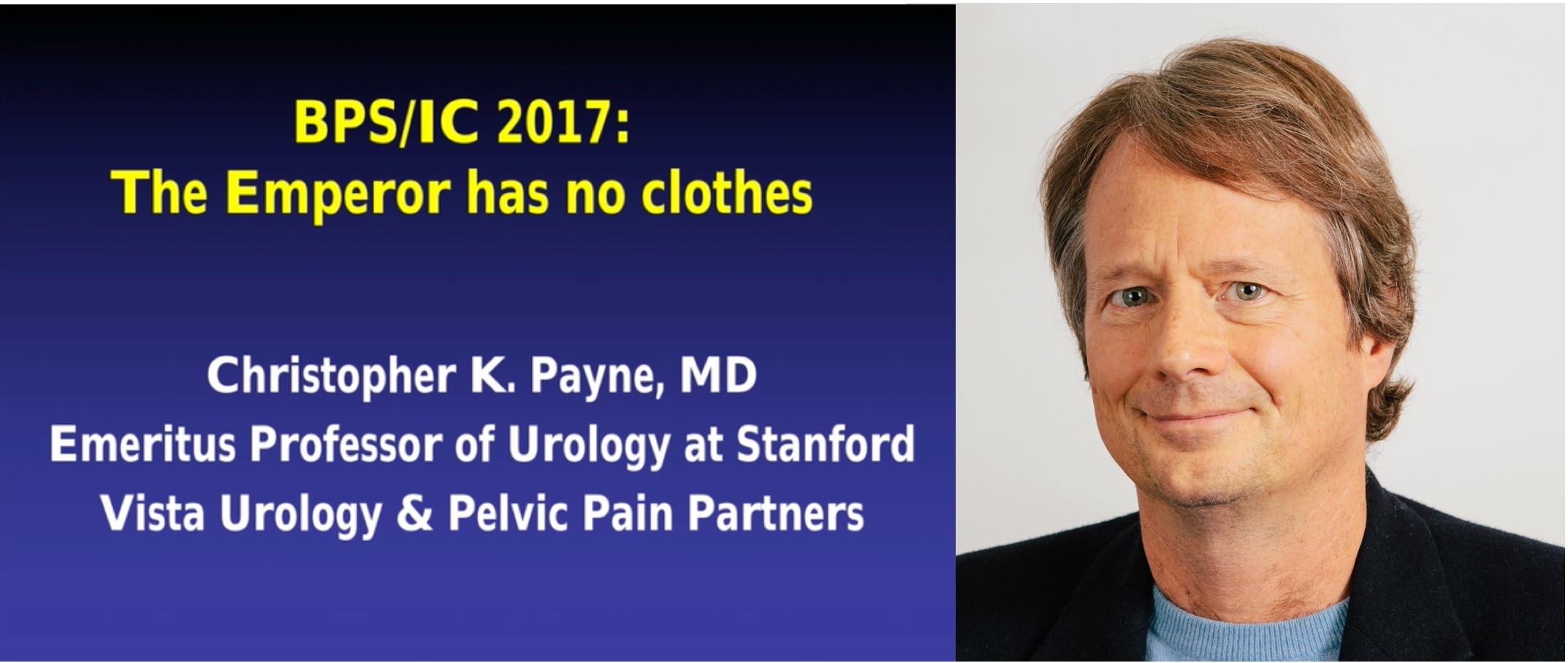Dr. Christopher Payne (Vista Urology, San Jose CA) offers his course on IC/BPS from the 2017 American Urological Association. This fabulous lecture was used to educate hundreds of urologists interested in IC/BPS. Dr. Payne covers the history of IC and explains why current diagnostic and treatment strategies may be incorrect and out of touch. He talks about a new future for IC using phenotyping that improves patient treatment and care. He ends with the discussion of these patients as having a potentially curable condition.
- He argues that ulcerative cystitis is a separate, unique disease separate from most other patients. Roughly 10% of patients have lesions.
- He argues that bladder pain syndrome is not a disease… but a syndrome. It’s just a starting point to understanding this patient community.
- He says that the AUA guidelines aren’t exactly right because it groups multiple types of patients into one treatment plan. He says that we must try to untangle these groups into distinct groups – with four proposed additional phenotypes.
- Bladder phenotype – “Is what doctors have been taught for the last 50 years.” Pain as the bladder fills with urine that is relieved by urination. Patients struggle bladder discomfort when it is physically palpated. He also suggests placing lidocaine in the bladder as a diagnostic. He discusses six potential treatments. A really important point with these patients is to focus on long-term outcomes. He always uses bladder training while working with pain.
- Myofascial phenotype – Most common phenotype in his practice. Patients have injuries, orthopedic issues. Patients have some bladder symptoms but that their tender points are outside of the bladder, at the myofascial tender points in the pelvic floor muscles, lower abdomen and back. A comprehensive myofascial diary is important here. These patients often have normal urine volume overnight. Patients must work with physical therapists but also at home to try to normalize their muscle health and function.
- Pudendal Neuropathy Phenotype – They have pain with sitting and increases with prolonged sitting. It is relieved by more activity. He discusses six potential treatment methods.
- Systemic Pain Phenotype – These are the patients who have overlapping functional somatic syndromes… including IBS, fibromyalgia, allergies, etc, They often also struggle with anxiety and catastrophizing. The focus of treatment is calming and soothing nerves, as well as treating for anxiety and depression. Therapy goal is to restore daily life and living.
This is the way that IC should be taught in medical schools and to doctors and nurses around the world. Watch and learn my IC friends!
This lecture was provided courtesy of UroToday and Professor Diane Newman (UPENN).
– Jill O.

